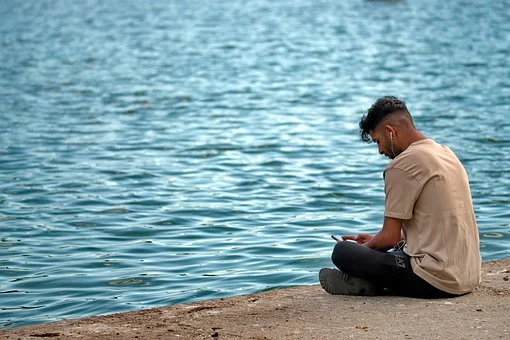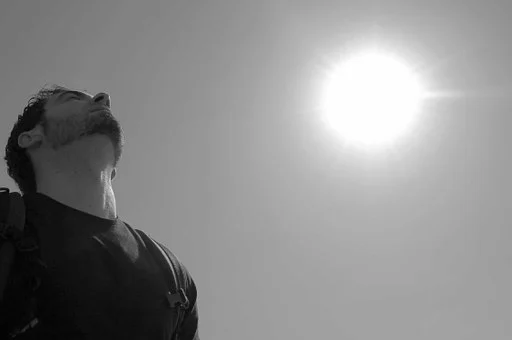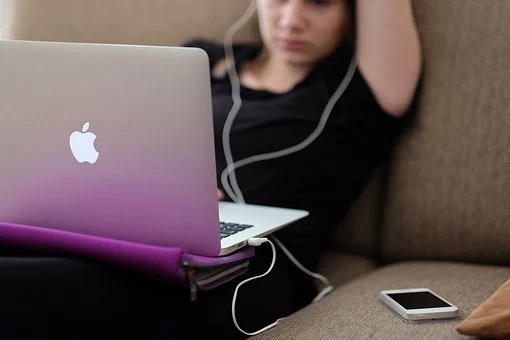How to manage your mental and emotional health during Covid-19

‘When we are no longer able to change a situation, we are challenged to change ourselves.’
Viktor E. Frankl
Psychiatrist & Existential Psychotherapist
(1905 – 1997)
2020 has undoubtedly been a year of profound change. It appears that there has not been a single area in our lives that has remained untouched, as we have seen profound economic, political, environmental and social change across the world.
Central to this has been the Covid-19 pandemic which has led directly to an increased demand for mental health services as it has affected those with pre-existing mental health conditions and because social isolation and quarantine can directly affect people’s mental health. COVID-19 has significantly impacted our relationships, especially as it has led to restrictions on whom we meet and how. Some of the measures that we might have taken to help mitigate the effect of all of this have been severely hindered by the actions designed to stop the transmission of the disease. Seeing loved ones, engaging in the community, and taking part in outdoor activities have been harder (and sometimes impossible) to access. In addition, the sectors in society that are designed to help us relax and enjoy life have been curtailed, as hospitality, health and fitness centres, the arts, entertainment, and creative industries, music venues, theatres etc.- have all been adversely affected.
More than two-thirds of adults in the UK (69%) report feeling somewhat or very worried about the effect COVID-19 is having on their life. The most common issues affecting wellbeing are worry about the future (63%), feeling stressed or anxious (56%) and feeling bored (49%).
The British Medical Association (BMA) reports that there is emerging evidence that people are resorting to negative coping strategies and that there has been a rise in problem drinking during lockdown.
The BMA has now called for an urgent review of mental health services and greater access for those in need.
Thus, the current situation underscores the need for changing attitudes to mental health. Robust mental health is inextricably linked to good emotional and physical health. On a wider level, it is therefore important that we address the impact of the pandemic on mental health, and on an individual level, consider ways in which we can protect our own health during this period and increase our resilience over the long term.
Some immediate actions that we can take to protect our health are:
- Restrict media exposure
- Develop morning and evening routines
- Build in rest and relaxation (yoga, meditation). Perhaps using apps like Insight Timer, Calm, and Headspace
- Ensure that you have enough on sleep (reduce caffeine and alcohol), and reduce screen time after dark
- Focus on healthy eating and hydration
- Integrate exercise to help release endorphins and increase dopamine and serotonin levels, which have a positive impact on emotional well-being. Apps such as Active 10, or Couch to 5K can help get you started and keep you motivated.
- Connect with nature and the living environment e.g. go for a walk in the park and practice some mindfulness at the same time

Other methods that we can develop over the medium to long term are:
- Strengthen our capacity for positive emotions
Human beings are wired for survival. According to the National Science Foundation, an average person has about 12,000 to 60,000 thoughts per day. Of those, 80% are negative and 95% are repetitive thoughts. If we repeat those negative thoughts, we think negative much more than we think positive thoughts. (27 Nov 2017) We therefore tend to pay more attention to negative experiences than to positive ones.
You can strengthen your capacity for positive emotions by consciously paying attention to nourishing moments. Create opportunities for positive feelings by:
- listening to a piece of music you enjoy,
- enjoying and savouring a meal,
- placing flowers in your home,
- doing creative projects such as woodworking, painting, playing an instrument, or organising your home. It does not matter what the task is, as long as it makes you happy.
Take note of positive feelings. Perhaps you feel focused, calm, or connected. Allow the positive feeling to grow by actively focusing on the good feelings for 5 to 10 seconds. Notice how you feel in your body.

- Build our resilience to stress and anxiety by developing the following 4 techniques:
| Technique 1: Ratio breathing The way you breathe can have a dramatic effect on your sense of well-being. Many people breathe poorly, without even realising it. This is especially true of people under stress. To improve the way you breathe, try this simple exercise for just five minutes a day. It can help relieve tension and anxiety.
If you find that only the hand on your abdomen moves, then you are breathing correctly; the abdomen is moving as your diaphragm rises and falls rhythmically. There should be little or no movement in your upper chest; your hand there should stay relatively still. |

| Technique 2: Releasing bodily tension Sit or lie down – get comfortable. If you are lying down pull your feet up until they rest flat on the floor and close your eyes. Check yourself for comfort. (This may require shifting your body around). Become aware of your breathing …. Feel the air move into your nose, mouth, and down your throat into your lungs. Focus on your body and let all the parts come into your awareness spontaneously. What parts of your body come into your awareness first? What parts are you less aware of? Become aware of which parts of your body you can feel easily, and which parts of your body have little sensation. Do you notice any difference between the right- and left-hand side of your body? Now become aware of any physical discomfort you are feeling. Become aware of the discomfort until you can describe it in detail. Focus and be aware of what happens to this discomfort. It may change …. Scan your body for any residual tension or discomfort and let it go with each exhalation. Continue to let go …
|

| Technique 3: Creative Visualisation Imagine yourself in a peaceful mountain scene, by a lake – a very peaceful scene. Listen to the water gently lapping the shore, be aware of the sun gently dancing and glinting on the surface of the water, and feel the sun on your face, gentle and warming. Focus your attention totally on the gentle lapping of the water, keep coming back to that calming and peaceful sound as the water gently ebbs and flows. If any other thought or feeling intrudes or breaks this focus, just acknowledge the thought or feeling, imagine yourself placing it on a raft and push it out into the lake. Watch it float away and then return your attention to the lapping of the water. Do not be concerned if your attention wanders. Just acknowledge the intrusion, place it on a raft and push it out into the lake. Allow yourself to focus all your attention on the gentle lapping of the water. Stay with this imagery for a couple of minutes. If thoughts and feelings do intrude, practice the discipline of acknowledging them, and placing them on that raft, so that you can return to the focus of the water gently lapping at the shore. |

| Technique 4: Special Place Visualisation (click here for Special Place Hypnosis) Take a few moments to think of a place that feels peaceful and calm. Your special place can be indoors or out. It may be by a lake like the one that we have just visited – or at the end of a path that leads to a pond, a shady forest by a stream, a special place by the sea, or by a waterfall. It may be a place that you have actually been to – or it may be a place at home. Whatever the place, know that it is peaceful, comfortable, and safe. Spend a few moments thinking what your safe place might be.
|

- Talk to a therapist
If you find that you are becoming overwhelmed during this time, and/or are experiencing relationship difficulties, resorting to negative coping strategies, struggling with loss or bereavement; or just feel that it would be helpful to talk to someone – you may wish to consider counselling.
An important first port of call may be to your GP. Ask what support may be available to you and to find out if there is any physiological cause impacting on your emotions e.g. thyroid problem, hormonal fluctuation due to Premenstrual syndrome (PMS) or Menopause.
There are many different types of psychological therapies. The National Institute for Health and Care Excellence (NICE) recommend Cognitive Behavioural Therapy (CBT) and short-term Psychodynamic Therapy in dealing with and anxiety and depression. However, the choice of therapy depends very much on the individual. Research tells us that one of the main predictors of success is the relationship between you and your therapist. It is important that you are able to open up to your therapist, regardless of how they work and the style of therapy that they offer.

Access to counselling during Covid-19
During this period, and in light of the current restrictions, there has been a marked increase in online counselling. In order to keep some continuity and to offer flexibility, therapists are increasingly offering this as an alternative to face to face counselling, especially in view of the fact the British Association of Counselling and Psychotherapy (BACP) are now ‘encouraging the use of face coverings for clients receiving therapy face to face, where appropriate’.
Of course, some people may not be comfortable with the online option, preferring to have face to face sessions or telephone counselling. However, for others this has proved to be a convenient alternative. One of the reasons for this is that online therapy still enables visual contact whilst not involving any time lost travelling to and from where the therapist is based. This can really help during this time when many people are self-isolating, shielding and working from home, but can also be a good option when, for example, there are childcare considerations, or someone is travelling to different locations because of their work commitments.
Access to counselling does not need to stop during this time. However, according to many professionals, including the BMA, there needs to be much more investment in existing mental health structures. On a personal level, it may mean considering options that are new and innovative for you, in order to keep investing in your own mental, emotional and physical health.
How we respond to this era of profound change is important. Many of the things that we have taken for granted have been especially impacted by Covid-19. This has led to loss, uncertainty and increasing levels of stress, anxiety, and depression. More investment and support are needed and on a much wider level. But equally as important is how we respond to this situation as individuals. How can we increase our own resilience and our tolerance to change? How can we adapt and take emotional responsibility? What support do we need to access to help us to do this – and how? Taking care of our mental and emotional health is of even greater significance during this time.
| If you feel that online counselling would benefit you, the following practical considerations may help: Online counselling should be carried out via secure and encrypted web platforms using a laptop, computer, or tablet if possible and, of course, it is important to have a stable Wi Fi connection. It may also be helpful to consider the following points if you are thinking about having online counselling:
|
Although, as previously mentioned, it can be convenient not having to factor in travel time, this can present an issue for some people because there is no longer a transition space between the therapy and resuming ‘normal’ life. However, as a client* explains this difficulty may not be insurmountable:
‘I find I need to schedule some time in the diary after the session to allow time for me to process things so that I don’t go straight back into my routine. When I drove back [from therapy] it gave me time to be alone and the chance to be quiet and mull things over’.
The client also emphasised the importance of considering boundaries:
‘I need to be in the same room every week, this is a separate room from where I work … I also use it for my hypnotherapy and mindfulness and so when I go into this room, I feel a weight is lifted and when I come out of this space – I feel a lot calmer’.
*This client’s statements are used with permission.

| Additional support If you feel in need of some additional support, you may find the following organisations helpful: Supportline offers emotional support to anybody on any subject Tel: 01708 765200 Email: info@supportline.org.uk Samaritans.org Tel: 116 123 free from the UK and Ireland Click here for more helplines MIND: https://www.mind.org.uk Young Minds: https://youngminds.org.uk Anxiety UK: https://www.anxietyuk.org.uk |
